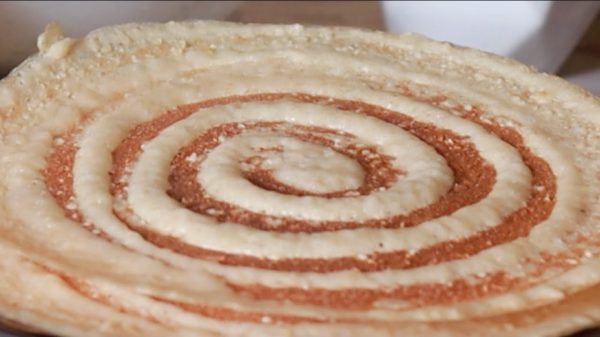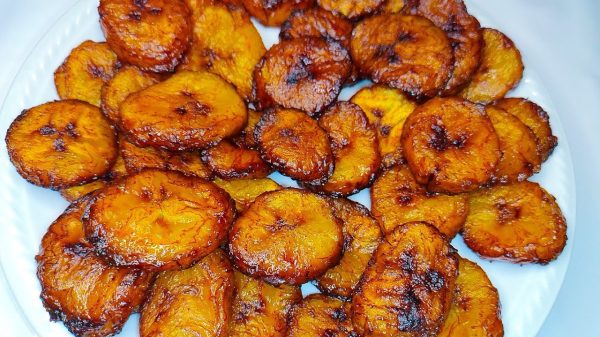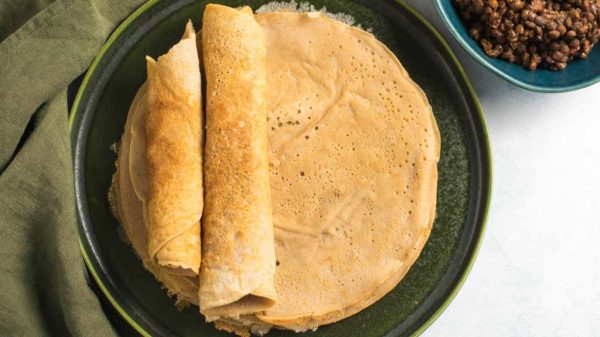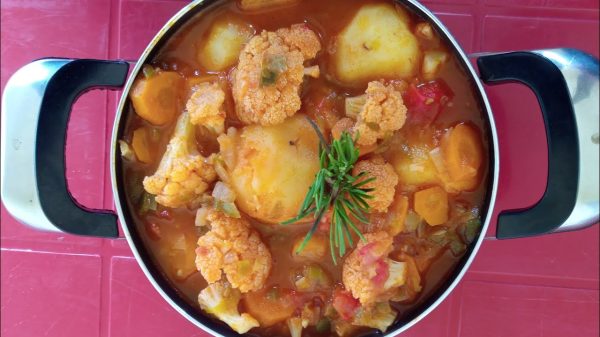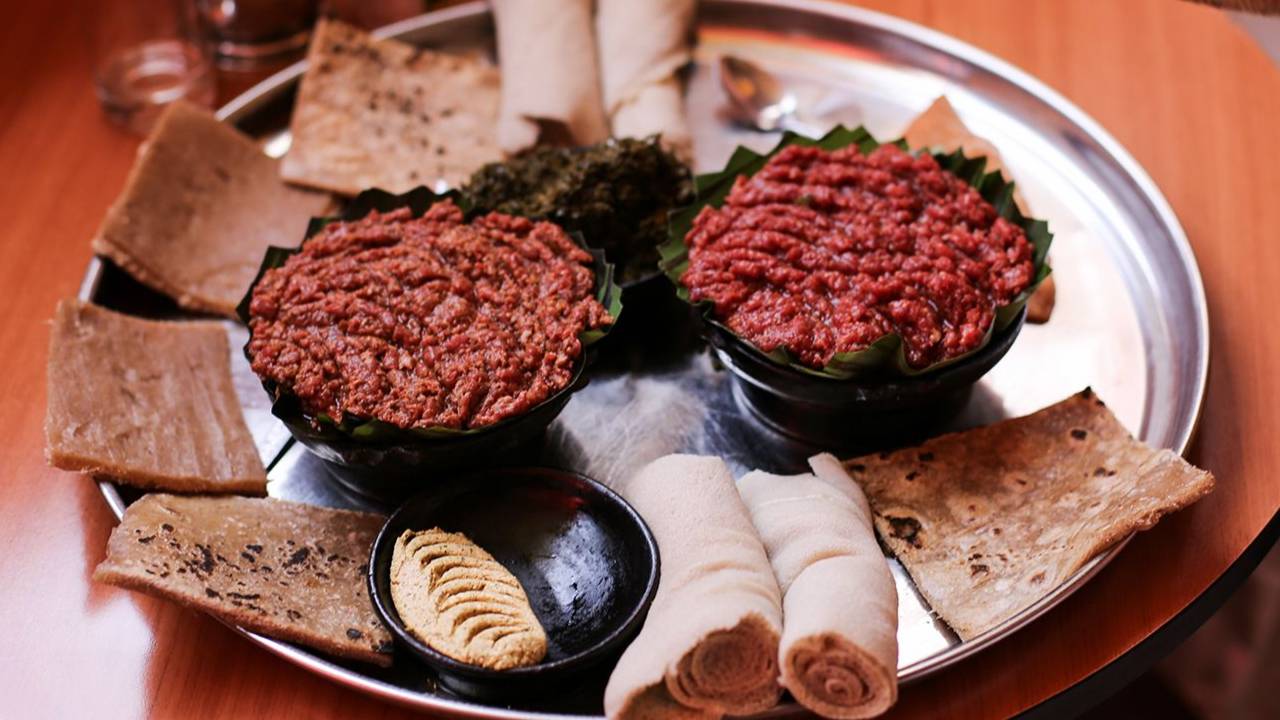Ethiopian cuisine is a vibrant tapestry of flavors, textures, and traditions that reflect the country’s rich cultural heritage.
Rooted in communal dining, meals are often shared from a single platter, fostering a sense of unity and togetherness. Central to this culinary experience is injera, a spongy sourdough flatbread made from teff flour, which serves both as a base and utensil for scooping up various stews and dishes. The cuisine is characterized by the generous use of spices like berbere—a fiery blend of chili peppers, garlic, ginger, and other spices—and niter kibbeh, a clarified butter infused with herbs and spices.
Whether you’re savoring a hearty meat stew or a flavorful vegetarian dish, Ethiopian food offers a unique and satisfying dining experience that delights the senses.
1. Doro Wat
Doro Wat is often considered the national dish of Ethiopia, cherished for its rich flavors and cultural significance. This hearty stew features tender chicken pieces simmered in a robust sauce made from berbere spice mix, onions, garlic, and niter kibbeh. Hard-boiled eggs are typically added, absorbing the spicy flavors of the sauce. The dish is traditionally served atop injera, allowing the bread to soak up the flavorful sauce. Doro Wat is a staple during special occasions and holidays, symbolizing hospitality and celebration.
2. Kitfo
Kitfo is a traditional dish originating from the Gurage people of Ethiopia. It consists of finely minced raw beef seasoned with mitmita—a spicy chili powder—and niter kibbeh. The dish can be served raw, known as “lebleb,” or lightly cooked. Kitfo is often accompanied by a mild cheese called ayibe and cooked greens, providing a balance to the spiciness of the meat. It’s commonly enjoyed with injera or kocho, a thick flatbread made from the ensete plant.
3. Shiro
Shiro is a beloved vegetarian stew made from powdered chickpeas or broad beans, blended with minced onions, garlic, and berbere spice. This creamy, flavorful dish is a staple in Ethiopian households, especially during fasting periods when meat and dairy are avoided. Shiro is typically served atop injera, allowing the bread to absorb its rich flavors. Variations like “tegabino shiro” are brought to the table bubbling hot in a clay pot, enhancing the dining experience.
4. Misir Wat
Misir Wat is a hearty stew made from red lentils simmered in a sauce of onions, garlic, and berbere spice. This dish is a staple in Ethiopian cuisine, offering a flavorful and protein-rich option for vegetarians and meat-eaters alike. Often served with injera, Misir Wat is a common component of the beyaynetu platter, allowing diners to enjoy a variety of flavors in one meal.
5. Gored Gored
6. Beyaynetu
Beyaynetu, meaning “a bit of everything,” is a platter that showcases a variety of Ethiopian dishes served atop injera. This assortment often includes lentil stews, sautéed vegetables, and salads, providing a comprehensive taste of the cuisine. Beyaynetu can be vegetarian or include meat, making it a versatile option for different dietary preferences. It’s a popular choice for those new to Ethiopian food, offering a diverse and satisfying meal.
7. Dulet
Dulet is a flavorful Ethiopian dish made from finely chopped beef tripe, liver, and lean meat, sautéed with onions, garlic, and spicy seasonings like mitmita. This dish is known for its rich, bold flavors and is often enjoyed with injera. Dulet is a favorite among those who appreciate the unique textures and tastes of offal, offering a distinctive culinary experience.
8. Tikil Gomen
Tikil Gomen is a gentle, comforting stew made from cabbage, potatoes, and carrots, seasoned with turmeric and other mild spices. This dish is often enjoyed during fasting periods and is a staple in Ethiopian vegetarian cuisine. Its subtle flavors and hearty ingredients make it a satisfying accompaniment to spicier dishes, providing balance to a meal.
9. Injera
Injera is a sourdough flatbread made from teff flour, known for its spongy texture and slightly tangy flavor. Serving as both a plate and utensil, injera is central to Ethiopian dining, used to scoop up stews and salads. Its unique texture allows it to absorb the flavors of accompanying dishes, enhancing the overall taste experience. Injera’s cultural significance and versatility make it an indispensable part of Ethiopian cuisine.
10. Dabo Kolo
Dabo Kolo is a popular Ethiopian and Eritrean snack consisting of small, crunchy pieces of spiced fried dough. The name “Dabo Kolo” combines “dabo,” meaning bread, and “kolo,” referring to roasted grains like barley or chickpeas, highlighting its role as a bread-based snack. To prepare Dabo Kolo, a dough is made from wheat flour, seasoned with spices such as berbere (a chili-based spice blend), salt, and sometimes sugar for a hint of sweetness. The dough is rolled into thin ropes, cut into small pieces, and then either fried or baked until golden brown and crispy. This snack is often enjoyed during festive occasions, including the Ethiopian New Year, and is commonly served with coffee or tea. Its spicy and savory flavor, combined with a satisfying crunch, makes Dabo Kolo a beloved treat among Ethiopians and Eritreans alike.
Subscribe to our Newsletter
Stay updated with the latest trends in African Pop Culture!






